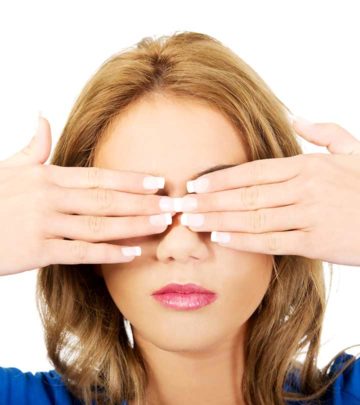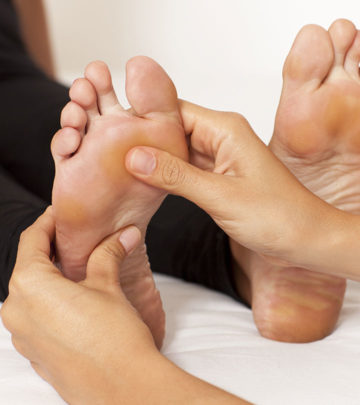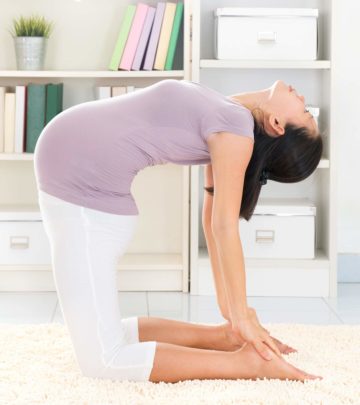6 Science-Backed Reasons You Must Get A Standing Desk Today

Image: Shutterstock
Sitting is the new smoking (1). Has anyone told you that yet? Research shows how a sedentary lifestyle can knock years off our lives. Now, that’s not something pleasing to know.
With our work and lifestyle promoting sedentary living like never before, it’s time for a change – which we have in the form of a standing desk. It’s all the rage right now. But is it worth it? How can it make your life better (and longer)?
What Is A Standing Desk?
Also called a stand-up desk, this is a desk that allows you to stand up and work. Comfortably. Most modern versions of this desk allow you to adjust the height and angle as per your requirement.
Studies show standing desks might just be the solution to the sedentary lifestyle epidemic plaguing our world today.
They can boost health. They may also improve productivity. And they (most definitely) can eliminate the dangerous effects of sitting too much.
What Are The Benefits Of A Standing Desk?
1. Can Protect Your Heart
Prolonged sitting has shown to cause a host of diseases, cardiovascular disease being the most prevalent of them. More shockingly, you might still be at risk of heart disease even if you perform a good amount of physical activity every day, especially if the remaining time is spent sitting (2).
In yet another study, short-term use of standing workstations had improved cardiometabolic risk parameters in office individuals (3).
Sedentary lifestyle was found to increase the risk of heart disease by as much as 147% (4). Other studies have also found how the use of standing desks had reduced total cholesterol levels and elevated levels of good cholesterol (5).
2. Can Lower Blood Sugar Levels
Standing desks can improve your metabolism and also increase circulation. Reports suggest how sitting for long periods can elevate blood sugar levels and increase body fat around the waist (6).
In yet another study, the blood sugar spike reduced by 43% in office workers who stood for 180 minutes after lunch when compared to sitting for the same duration (7).
3. A Standing Desk Can Lower Your Risk Of Obesity
The math is simple – if you take in more calories than you burn, you put on weight. And burning more calories than you take in can help you lose weight.
Of course, exercise is the best option. But standing instead of sitting can be an added benefit. Reports show how you can lose about 5 pounds every year just by standing. And guess what – an average American sits for about 7 hours a day. Nothing impressive.
Standing burns more calories than sitting – 0.34 more calories per minute than sitting (8). This, along with regular exercise and a proper diet, can further cut down the risk of obesity.
4. May Treat Back Pain And Improve Posture
Back pain is one common problem in almost every office with a sedentary lifestyle. But studies have shown how participants saw improvement in their symptoms after using standing desks (9).
Using a standing desk was also found to reduce upper back and neck pain by as much as 54%. The desk, as per the study, can reduce sitting time and generate other benefits in addition to relieving pain (10).
5. Improves Mood And Productivity

Standing enhances your blood circulation, and this can help stimulate brain activity and improve your mood as a result (10). When you stand, you are bound to alternate your body weight between your left and right legs. This further improves circulation.
With a better mood, you can also be far more productive. This also means less stress.
6. Promotes Longevity
This is a no-brainer. With improved calorie burning comes added benefits – and all of those would compound to increase your life expectancy. Reports show that giving standing desks to 20% of the employees can improve their combined lifespan by a whopping 7,492 years (11).
Conclusion
Sedentary lifestyles have done more harm to us than we can imagine. It is time that we stood up for good health. Get a standing desk today!
And let us know how this article helped you by leaving a comment in the box below.
Frequently Asked Questions
How long should you stand at a standing desk?
Standing for 20 to 30 minutes for every hour can give you the biggest benefits. But again, it all depends on your capability. If you can stand for long without any exhaustion, why not?
What happens if you stand up for too long?
You don’t want to stand up for 5 hours at a stretch. And you don’t want to stand your way up to fatigue. No, that is not recommended. Standing for too long can lead to excessively lowered blood pressure and fainting. It can also increase the risk of long-term back pain, ironically. Maintain balance. Stand up when you can, how long you can, comfortably.
References
1. “Sitting is the new smoking…”. British Journal of General Practice, US National Library of Medicine.
2. “Impact of sit-stand desks at work on energy…”. Pilot and Feasibility Studies, US National Library of Medicine.
3. “Evaluation of sit-stand workstations…”. BMC Public Health, US National Library of Medicine.
4. “Sedentary time in adults and the association…”. Diabetologia, US National Library of Medicine.
5. “Taking a stand: the effects of…”. International Journal of Environmental Research and Public Health, US National Library of Medicine.
6. “How to manage diabetes in the armed forces…”. Office of Disease Prevention and Health Promotion.
7. “Standing-based office work shows…”. Occupational and Environmental Medicine, US National Library of Medicine.
8. “Difference in caloric expenditure…”. Journal of physical activity & health, US National Library of Medicine.
9. “Impact of a sit-stand workstation on chronic low…”. Journal of Occupational and Environmental Medicine, US National Library of Medicine.
10.“Reducing occupational sitting time and…”. Preventing Chronic Disease, US National Library of Medicine.
11. “Economic evaluation of a randomized controlled…”. Scandinavian Journal of Work, Environment & Health.
Community Experiences
Join the conversation and become a part of our vibrant community! Share your stories, experiences, and insights to connect with like-minded individuals.













